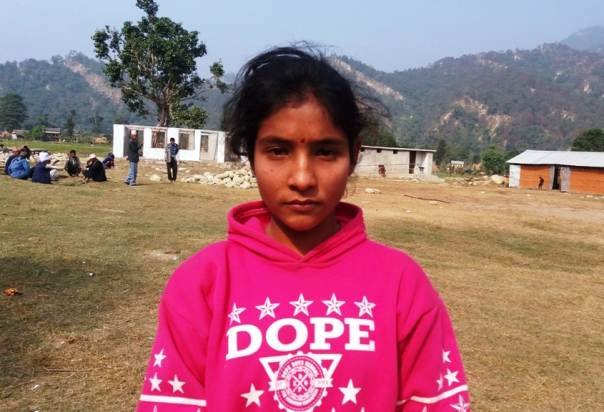
Rather than go to school, girls are often expected to help with the household chores or look after younger siblings, and even if they are able to attend, face more challenges in completing a full cycle and thence gaining meaningful employment.
These challenges were hard enough prior to April 25, 2015 - the day the first major earthquake hit Lamjung and many other districts - and since then, the situation has only got harder.
Despite being right next to the epicentre, there were few deaths or casualties in Lamjung. But there was quite a lot of damage, with more than 2,000 houses destroyed, and a similar number seriously damaged.
Faced with a catastrophe on this level, communities can crumble. But that was not the case with Lamjung. One of the reasons for that was the leadership shown by young women after the quake.
The charity I lead is called Global Action Nepal, and for 20 years we have been working to grow the role and capacity of women in the country.
There's one programme I believe has played an important role in rebuilding Lamjung. It's called 'Sisters for Sisters' (S4S for short), developed with VSO and funded by DfID's Girl Education Challenge Fund.
The main aim of this programme is to empower and support 'big sisters', slightly older girls who have completed their own education, to help 'little sisters' stay - and thrive - in school.
They offer coaching and support to boost self-esteem, check up on little sisters' attendance rates, and even successfully re-enrol drop outs.
"More families are now sending their girls to school, and more women are finding the courage to find a job as well as motherhood," says 'big sister' Januka Tapa Mager. "I want to show them that they can complete their education, and feel confident about themselves."
Thus far, the programme has had a huge impact, with girls attending schools more regularly and teachers showing more gender sensitivity in their teaching, benefitting 'little sisters' like Dil Kumari.
Dil Kumari is a 12-year-old who ran away to the local town and was working as a cleaner in a restaurant. With the support of her S4S big sister, she was brought back home, and supported to go back to school, where she is studying even now.
This ongoing capacity-building and upskilling in Lamjung meant that when the earthquake struck, GAN had a ready pool of talent to help deliver our emergency response programmes, which included the construction of temporary learning centres, the provision of psychosocial training and support, and the provision of training in post-emergency education.
The young women of the S4S took the lead in delivering this. Kabita Panta, aged 21, was one such young woman.
MIGRATION PUTS ONUS ON WOMEN
As a 'big sister', she had gained experience in dealing with difficult situations, negotiating, planning and organising, so that when she was asked to take on more responsibility in the emergency phase, she was able to do so with aplomb.
Kabita was based at Jana Jagriti Lower Secondary School, and so impressed were the school with her confidence and her relationship not only with the children but with the other teachers, that she has now been offered a full-time job as a computer teacher.
A women-led response to the aftermath of the earthquakes is not only desirable, it is critical, considering Nepal's shifting demographics, particularly with regard to its labour market. It is estimated that more than 3 million Nepalis are working overseas - the vast majority of them male - predominantly in the Middle East and North Africa.
Many of the picture postcard villages Nepal is famous for conceal a darker reality, of separated and divided families, and of huge dependence on foreign remittances. Women, who often comprise 70 to 80 percent of the population of these villages are clearly the last, best hope for helping Nepal rebuild.
Moreover, strengthening the position of women is crucial in a post-disaster scenario, where incidences of trafficking often increase in the chaos that follows.
In the months to come, the S4S programme will continue to thrive in Lamjung district, and GAN will be using much of the knowledge gained from this programme in a new project in Dolakha district.
Working with a local NGO, young women will be trained in a range of building skills (primarily masonry and carpentry), and will then train communities in very remote areas in rebuilding techniques, to ensure that Nepal really is able to build back better.
In gender terms, Nepal has come a long way since the outset of the Millennium Development Goals, when it was one of just six countries where, according to the WHO, women's life expectancy was lower than men's.
At the macro level, there are further promising signs, as Nepal recently elected its first female speaker in its parliamentary history, and is one of the few countries to issue 'third gender' passports. However, the real test will be to ensure that these attitudes change at the micro level.
Despite the amazing things the young women in the S4S programme have done, before and after the earthquakes, there are still some - happily shrinking day-by-day - who fight against it.
But if Nepal truly is to build back better, it is young women like Kabita and Dil Kumari who must be given the opportunity to flourish.



Comment: See also: Nepal quake survivors face threat from human traffickers supplying sex trade